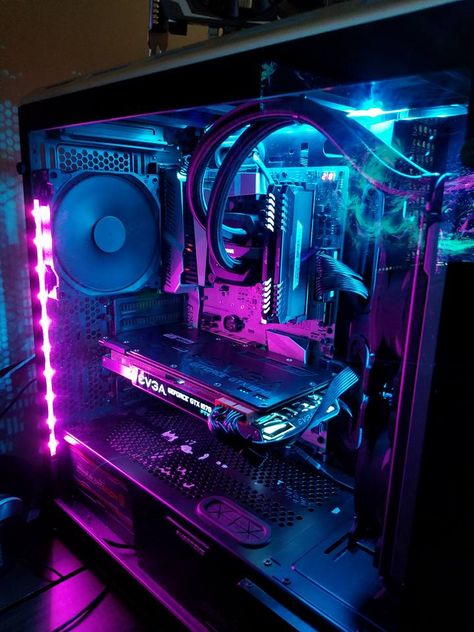Water cooled vs air cooled

The fact is that computers generate heat, and too much heat can be problematic. There are a few ways that computers can cool themselves.The most popular ways are passive cooling, air cooling - which is performed through fans, and liquid cooling - which uses water to absorb heat from the processor. We have seen metal fins with our without fans throughout the components in your computer. Sometimes, we see tubes coming from some of these components that are attached to metal fins. These are all ways to cool down components in our computers.
Electronic equipment is comprised of circuits which a collection of components such as resistors, inductors, capacitors, etc. They are all connected together with wiring that has electricity flowing through through. All of these components have some measure of resistance, which means that they resist the flow of electricity in some way. We need to consider the first law of thermodynamics, which is a version of the law of the conservation of energy that has been adapted for thermodynamic systems. To put it simply, energy cannot be created nor destroyed, but it can change forms or move around. In the case of electronics, when electricity flows through the circuit and encounters resistance, the energy is converted to heat. It is this heat that we need to dissipate.
In this blog, we will look at active heat dissipation. In our computers, air cooling consists of heatsinks and fans. Air cooling is all about transferring heat from your component through the use of ambient air with the assistance of fans. Liquid cooling, on the other hand, replaces fans with pipes which carry coolant through them. The system uses water blocks, which act as heat sinks, as well as a few pumps that push the water through the whole system to keep things running. We will look at 3 main factors to consider when determining whether to go air cooled or liquid cooled.
Price
Air cooling has some distinct advantages, one of which of course is price. Fans of high quality and more importantly high reliability can be purchased relatively inexpensively. Fans of course come available in many different sizes, but there also different fans for specific uses. They mainly fall into two categories, high air flow or static pressure. High Airflow fans are made to move as much air as possible and are usually used as case fans. If we need to either push or pull air through some sort of obstruction such as a CPU heat sink, we usually use static pressure fans since they deal with the resistance much more efficiently than High Airflow fans. Liquid cooling systems involve tubes for the coolant to flow, a radiator to dissipate heat and a heat exchange to draw heat away from the individual components. If you are cooling more than one component, we have to multiply the complexity of installation.
Thermal efficiency
When comparing a well designed liquid cooled system to a well designed air cooled system, the thermal efficiency of a liquid cooled system will be greater. Water has about 3000 times the specific heat capacity of dry air per unit of volume. While the difference is isn't as drastic if we measure by weight, water is still about four times greater. Most internal combustion engines these days are liquid cooled. In cold climates we use hot water heating and radiators to distribute heat throughout. In PC's, liquid cooling directs heat away from a component to a radiator which dissipates the heat from the liquid. To do this, the liquid needs to continually circulate within the system and the radiator usually needs a little assistance dissipating the heat using fans.
Convenience
Another great advantage of air cooling is ease of use. Point the fan in the direction you want the air to move, secure it with screws or clips, and plug in the cable to either a header on the motherboard or a via a connector on the power supply. If something is not working correctly, you can clearly see whether the fan is moving or not, and if you want to lower the temperature more, you can to add more fans or even faster fans to improve the cooling efficiency. There are some disadvantages to air cooling however, but these are not deal breakers as they can usually be addressed. First off is noise. The faster a fan spins, the noisier it becomes. This is more true with smaller fan sizes since they need to spin faster in order to move the same amount of air as a larger fan. Liquid cooling systems tend to be quieter than comparable air cooled systems.The other disadvantage is the accumulation of dust, as more air travels into your case so does the amount of dust. This can be alleviated through the use of filters when it comes to case fans. In liquid cooled systems, the head sink near the components are not exposed to air and will have less of a tendency to clog up with dust.